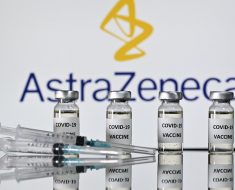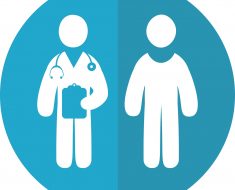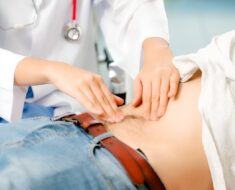Type 2 diabetes can be a 'devastating diagnosis' says expert
We use your sign-up to provide content in ways you’ve consented to and to improve our understanding of you. This may include adverts from us and 3rd parties based on our understanding. You can unsubscribe at any time. More info
Only eight percent of all people with diabetes have type 1 diabetes, so most people you meet with diabetes will have type 2. It’s easy to get confused between the two, but the main difference is that you can’t affect your risk of developing type 1 by your lifestyle or weight. If you’ve already got type 2 diabetes, there’s a chance you can reverse it… but can type 2 turn into type 1?
Type 1 and type 2 diabetes have similar symptoms, but the main differences are how quickly these symptoms come on and the cause.
Both types of diabetes happen when your blood sugar levels are too high.
Type 1 diabetes isn’t affected by your lifestyle or weight, it happens when your body is attacking the cells in your pancreas that make insulin.
Without this insulin, the glucose (sugar) level in your blood becomes too high.
Type 2 diabetes, however, is when the insulin in your pancreas isn’t working properly or your pancreas can’t make enough insulin, causing your blood sugar levels to rise.


Type 2 diabetes symptoms
The most common symptom of type 2 diabetes is feeling very tired because your body can’t get enough glucose into your cells for energy.
On top of this, you might feel extra thirsty, need to go to the toilet a lot, or lose weight without trying to.
The symptoms of type 2 diabetes can develop more slowly than the symptoms of type 1, so the condition is harder to spot.
Some people don’t get any symptoms or they’re so mild that they don’t notice them.
The following five things play a part in how likely you are to develop type 2 diabetes:
- your age
- if you have a parent, brother, sister or child with diabetes
- your ethnicity
- high blood pressure
- being overweight


Type 1 diabetes symptoms
Diabetes UK states that the symptoms of diabetes aren’t the same for everyone, but they’re the same for type 1 and type 2.
Type 1 diabetes is nothing to do with diet or lifestyle and you can’t increase your risk of it through lifestyle choices, but we don’t know what causes it.
The following could be a sign of type 1 or type 2 diabetes, it’s the timing that you need to watch out for:
- Going to the toilet a lot, especially at night.
- Being really thirsty.
- Feeling more tired than usual.
- Losing weight without trying to.
- Genital itching or thrush.
- Cuts and wounds take longer to heal.
- Blurred eyesight
- Increased hunger.
There’s no permanent cure for type 1 or type 2 diabetes, but type 2 diabetes can be reversed with a few changes.
Diabetes UK explains: “There’s evidence that some people with type 2 diabetes can put their diabetes into remission by losing weight.
“Following a very low-calorie diet under medical supervision, or having surgery are some ways you can put your type 2 diabetes into remission.”
Other lifestyle or medical changes such as moving more, eating a healthy and balanced diet, or taking metformin or insulin will also help.
If you have type 1 diabetes, insulin pumps and pens or islet cell transplants are the best treatments, according to Diabetes UK.
See your GP for a diagnosis and treatment options.

Can type 2 diabetes turn into type 1?
Type 2 diabetes cannot become type 1 diabetes, but it is possible to be misdiagnosed with type 2 when you actually have type 1 diabetes.
The symptoms are the same and a doctor may diagnose you with the more common variation (type 2 diabetes), especially if you are an overweight or obese adult.
The stereotypes that people with type 1 diabetes are thin and those with type 2 are overweight or obese are often responsible for misdiagnosis.
The fact that type 2 diabetes is more likely to occur in middle-aged and older people but type 1 usually appears in childhood and before 40 also plays a role in misdiagnosis.
Understanding the risk factors and being aware of your family history can help to get a correct diagnosis, alongside proper testing.
Source: Read Full Article





